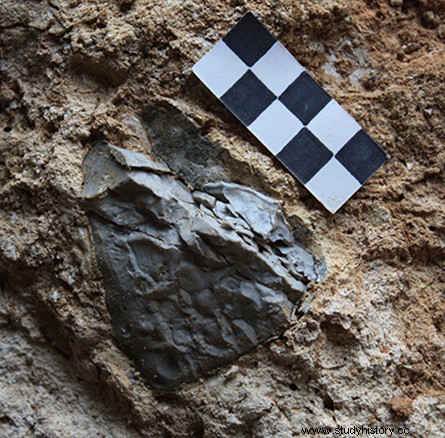 Wood fire
Wood fire PIONEERS. Homo living around 800,000 years ago in southern Spain were the “campfire pioneers” in Europe, say Spanish, German and Canadian researchers in the Journal of Archeological Science. “They lit intentionally small fires in the cave of Cueva Negra del Estrecho del Rio Quipar (the black cave in the Rio Quipar gorge) near Murcia.” This is the oldest proof of fire making on the Old Continent. In Israel, the cave of Gesher Benot Ya'aqov, dated -790,000 years ago, previously revealed traces of the oldest "maintained", "fed" fire, attributed to Homo erectus.
The identity of the pioneer of Cueva Negra (Homo erectus? Homo heidelbergensis? Homo antecessor? ) remains a mystery. But for paleontologist Michael Walker, from the University of Murcia (Spain) and archaeozoologist Sara Rhodes, from the University of Tübingen (Germany), this discovery suggests that around 1 million years ago, members of the genus humans have regularly caused small fires, with short flames. The excavations carried out since 2011 in the shelter of Cueva Negra have in fact brought to light more than 165 stone objects having been heated (see photo below ), as well as several hundred animal bones showing signs of exposure to high heat, or even carbonization. Microscopic and chemical analyzes indicate that they heated between 400° and 600° Celsius, as if they had been burned in a fire.

This stone discovered in the cave of Cueva Negra, in Spain, bears traces of undulation, a sign that it has been heated. © Mupanquat Murcian Association.
“Sophisticated tool users in the Cueva Negra had to know how to choose the right wood or stone to strike sparks from small heaps of tinder, that mushroom flesh that could ignite easily,” say the researchers.
Homo, a less fearful animal?
“The role fire played in early human evolution is a hot potato ”, dares Michael Walker. At some Pleistocene African sites - such as Wonderwerk Cave in South Africa - traces of combustion are much debated, as they could be due to bush fires or volcanic ash. “In Cueva Negra, however, sparks from an outdoor bushfire are unlikely to have spread inside, causing a roaring fire and a 400ºC overheating ”, assures the researcher. Especially since the cave was at the time bordered by a river and not by dry plants. “It is plausible that smoldering “brandons” left over from other bushfires were carried to the shelter of the cave, by Homo less fearful than other animals in front of fire ”, says the paleontologist. No hearths or hearths have been found at Cueva Negra, so it is unlikely that its inhabitants were able to keep the fire under control for long. But a small fire maintained for some time could be used to deter predators, provide heat, or roast food.
Precisely, have foodstuffs been grilled or cooked at Cueva Negra? “It's impossible to tell, replies Michael Walker to Sciences et Avenir. Cooking may have played a major role in human evolution from at least -1.5 million years ago and influenced increased brain size through improved digestion and increased nutrient availability [read special issue of Sciences et Avenir No. 177 ]. Nevertheless, the real "hearths" [read special issue ofS. et A. no. 183] appear to be absent from Palaeolithic sites before half a million years ago.” So researchers can't yet, he says, "say precisely where and when early humans started controlling the heat of a fire and cooking regularly" .
